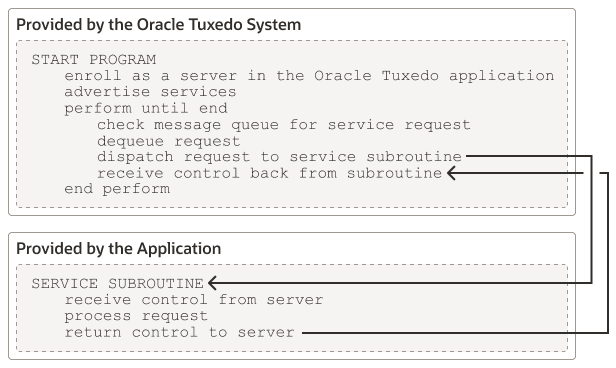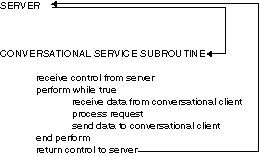1.4.1 Basic Server Operation
To build server processes, applications combine their service
subroutines with a main() process provided by the
Oracle Tuxedo system. This system-supplied main() is a
set of predefined functions. It performs server initialization and
termination and allocates buffers that can be used to receive and
dispatch incoming requests to service routines. All of this
processing is transparent to the application.
The following figure summarizes, in pseudo-code, the interaction between a server and a service subroutine.
Figure 1-2 Pseudo-code for a Request/Response Server and a Service Subroutine

After initialization, an ATMI server allocates a buffer, waits until a request message is delivered to its message queue, dequeues the request, and dispatches it to a service subroutine for processing. If a reply is required, the reply is considered part of request processing.
The conversational paradigm is somewhat different from request/response, as illustrated by the pseudo-code in the shown in the following figure.
Figure 1-3 Pseudo-code for a Conversational Service Subroutine

The Oracle Tuxedo system-supplied main() process contains the code needed to enroll a process as an ATMI server, advertise services, allocate buffers, and dequeue requests. ATMI functions are used in service subroutines that process requests. When you are ready to compile and test your service subroutines, you must link edit them with the server main() and generate an executable server. To do so, run the buildserver command.
Parent topic: Oracle Tuxedo Servers